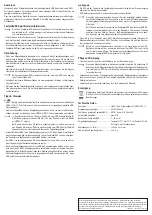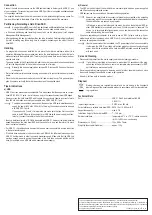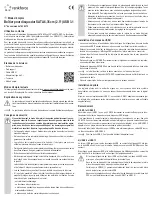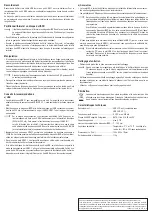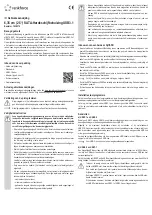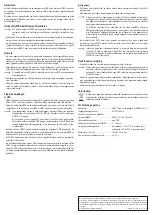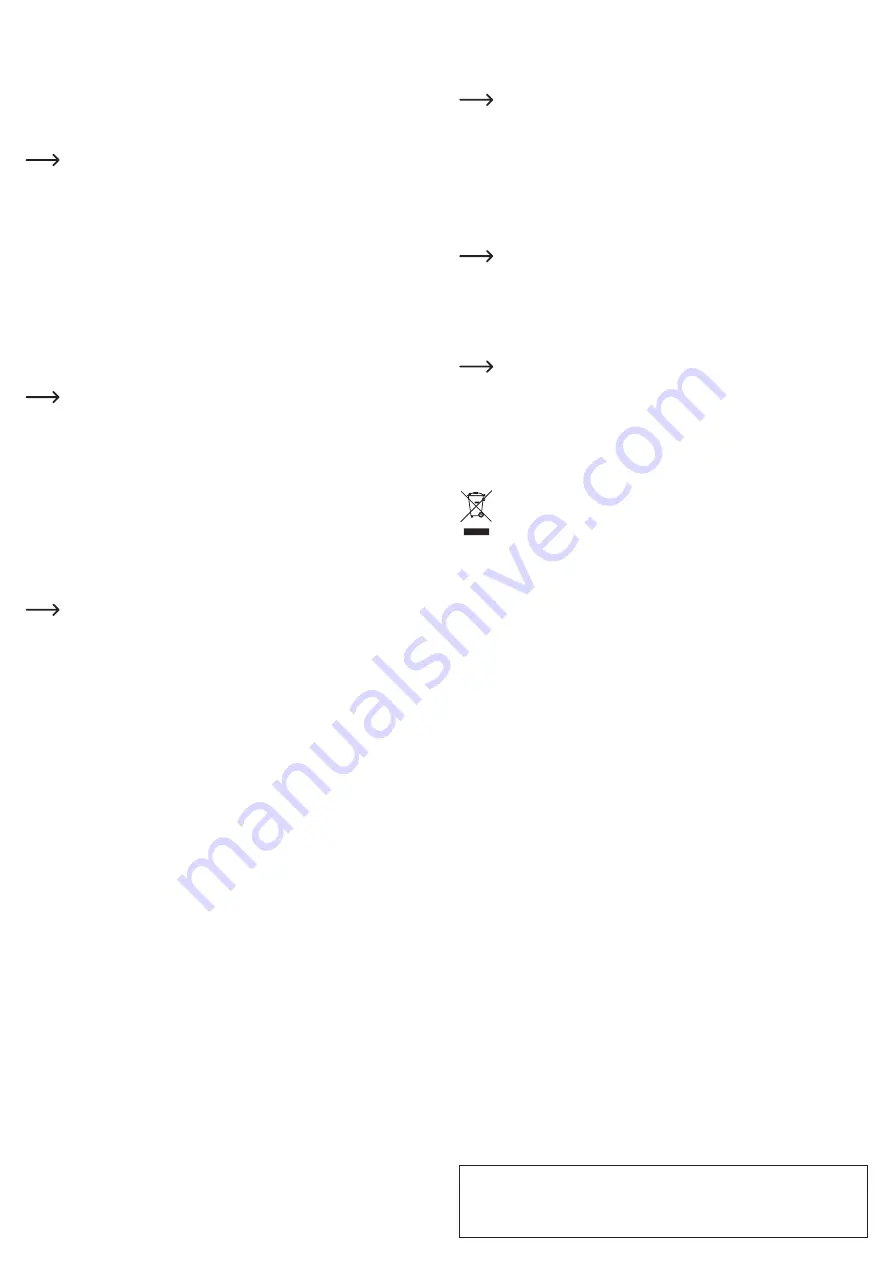
This is a publication by Conrad Electronic SE, Klaus-Conrad-Str. 1, D-92240 Hirschau (www.conrad.com).
All rights including translation reserved. Reproduction by any method, e.g. photocopy, microfilming, or the capture in
electronic data processing systems require the prior written approval by the editor. Reprinting, also in part, is prohibited.
This publication represent the technical status at the time of printing.
Copyright 2016 by Conrad Electronic SE.
*1438372_V1_0616_02_VTP_m_en
Connection
Connect the hard drive enclosure via the USB cable included in delivery with a USB 3.1 port
of your computer. For connecting to a modern USB-C port, there is supplied a suitable adapter
in the package contents.
The supplied stand allows the hard drive enclosure to be installed upright, saving space. For
this, insert the stand in the middle of one of the two longitudinal sides of the enclosure.
Partitioning/Formatting a Hard Drive/SSD
A new hard drive/SSD has to be firstly partitioned and formatted before it will appear
in the Windows File Manager and before it can be used as data memory.
• In Windows, partitioning and formatting is easy to do via the control panel (via Computer
Management/Disk Management).
• After partitioning, the newly created partition has to be formatted. Fast formatting is sufficient;
“normal” formatting may take a long time to complete, depending on the size of the hard
drive/SSD.
Handling
• If a magnetic disc has been installed, do not move the hard drive enclosure when it is in
operation. Movement during operation may cause the write/read heads in the hard drive to
make contact with the magnetic disk. This may not only lead to data loss but may also dam-
age the hard drive!
The same applies to the 30-second period after the hard drive enclosure has been switched
off, until the magnetic disk in the hard drive has come to a full stop.
Naturally, this does not apply when using an SSD, since an SSD does not have any
moving parts.
• Protect valuable furniture surfaces by using a suitable mat to prevent scratches or pressure
points.
• Place the hard drive enclosure where it cannot fall down or topple over. This particularly ap-
plies if you place vertically the hard drive enclosure on the supplied stand.
Tips & Indications
a) USB
• USB 3.1 devices are backwards compatible. This also means that these operate on conven-
tional USB 3.0/2.0/1.1 ports - but in this case, only in the respective maximum USB speed.
• However, since the hard drive/SSD and the hard drive enclosure require a current of more
than 500 mA, operation is normally not possible via a USB 2.0/USB 1.1 port.
Y cables are available as accessories; these use two USB ports simultaneously to
supply the power (500 mA + 500 mA). In this way, the enclosure can also be used
with USB 2.0/1.1 ports.
If you use such a Y cable, it is imperative you make sure that you first connect the
cable to both USB ports of the computer or USB hub (with power supply) and then,
last of all, connect the cable to the hard drive enclosure.
• Ideally, a data transfer rate of 10 Gbit/s is possible with USB3.1. However, the actual possible
speed depends on the hard drive/SSD and the controller in use, and therefore it is much
lower in practical operation.
• For USB 3.1, the cables should be selected to be as short as possible to avoid a reduction
in the data transfer speed.
• If the hard drive enclosure is to be connected via a USB hub, the latter must also support the
USB 3.1 transfer mode in order to achieve maximum speed. Make sure that the USB hub
provides enough power to ensure the operation of the hard drive enclosure with the built-in
drive (for example, use a USB hub with a separate power supply).
b) General
• The LED on the front side of the hard disk drive enclosure lights up when power is supplied
and it flashes during read/write access.
• USB devices can be connected and disconnected during operation.
However, you should take into account that data may be corrupted or the operating
system may crash if the connection cable is disconnected while data is being trans-
ferred or while files are opened by a program.
In Windows, a symbol is displayed in the menu bar when the hard drive/SSD (or
other USB devices) are connected and in use. Click this symbol to “separate” the
device, i.e. to terminate data transmission, so you can disconnect the connection
cable without risking the loss of data.
• If you have upgraded your computer to be able to use a USB 3.1 plug-in card (e.g., if your
motherboard still is not equipped with a USB 3.1 port), you must check whether the plug-in
card has its own power connection.
If such a power connection is available, the PC power supply has to be connected to
it; otherwise, the USB 3.1 port does not function properly or does not supply enough
power. A hard disk enclosure with a hard drive/SSD installed cannot be operated
with such a port.
Care and Cleaning
• Disconnect the product from the mains supply before each cleaning procedure.
If a hard drive is installed in the enclosure, wait at least 30 seconds until the mag-
netic disks in the hard drive have come to a complete stop (unnecessary for SSD,
as it contains no mechanical parts).
• Never use abrasive cleaning agents, cleaning alcohol or other chemical solutions, since
these could damage the enclosure or even impair operation.
• Use a dry, lint-free cloth to clean the product.
Disposal
Electronic devices are recyclable material and do not belong in the household
waste. Dispose of the unserviceable product in accordance with the relevant statu-
tory regulations.
Technical Data
Port ................................................................. USB 3.1 Gen 2 (compatible with USB
3.0/2.0/1.1)
Input voltage/ current ...................................... 5 V/DC, max. 900 mA
For installation of a suitable hard drive/SSD ... SATA I, II or III, 6.35 cm/2.5“
Supported capacity ......................................... max. 8 TB
Installation height of the hard drive/SSD ........ 7....14.5 mm
Ambient conditions ......................................... Temperature 0 °C to +70 °C, relative air humid-
ity 10% to 90%, non- condensing
Dimensions (L x W x H) .................................. 135 x 85.5 x 18 mm
Weight (without cable/hard drive) ................... approx. 110 g


